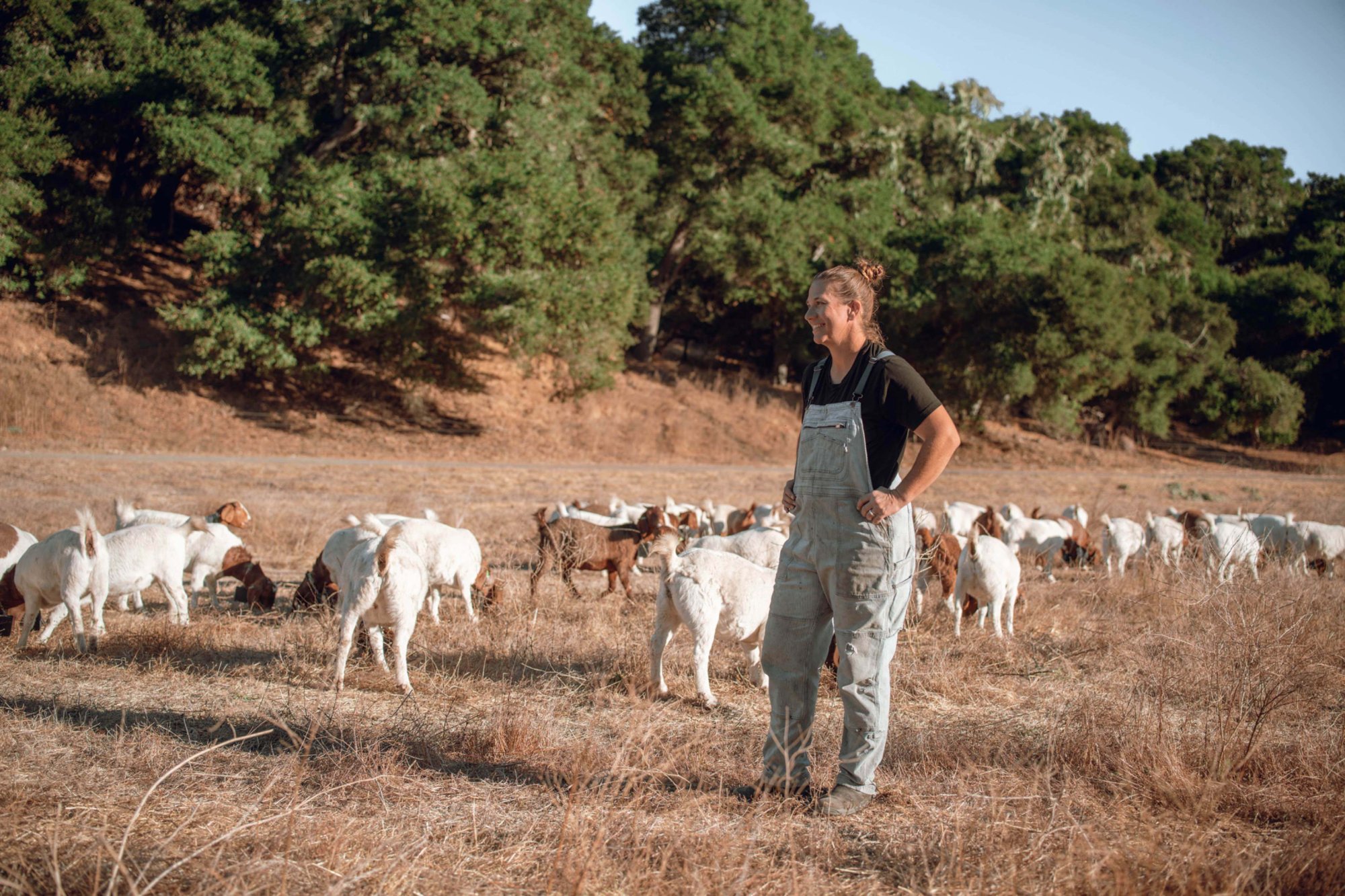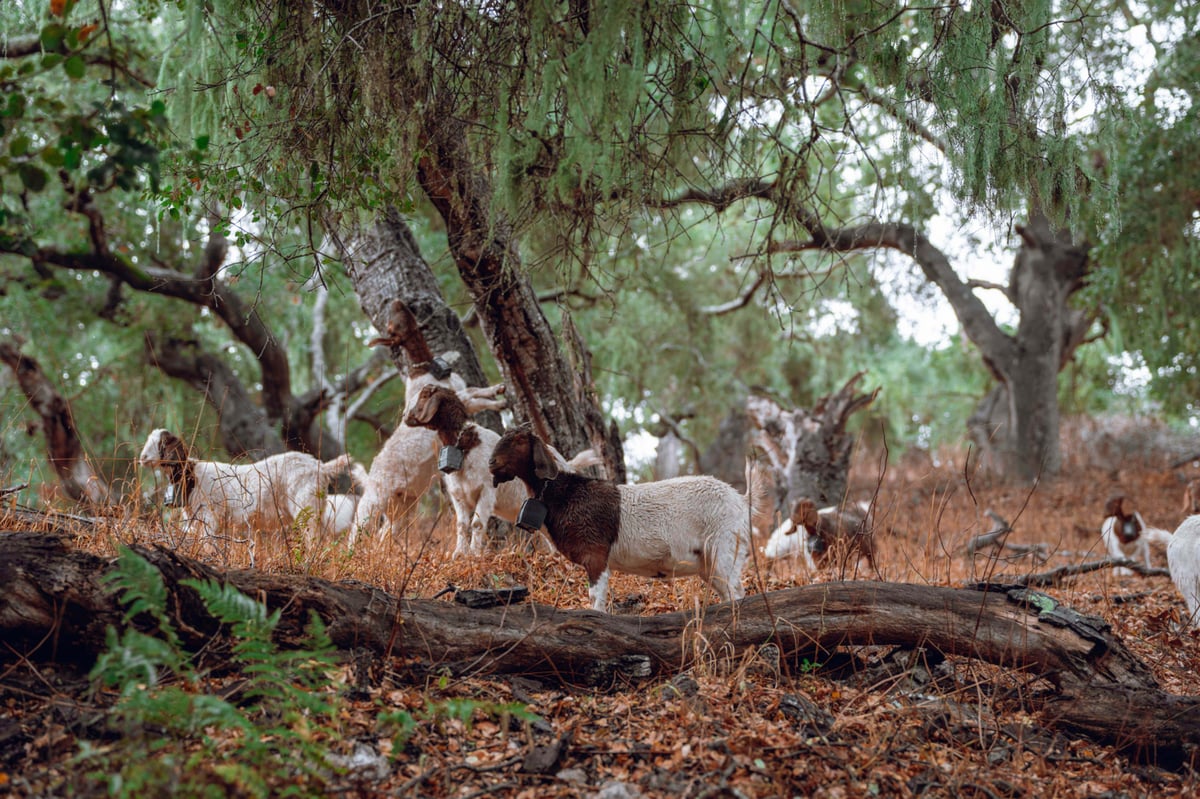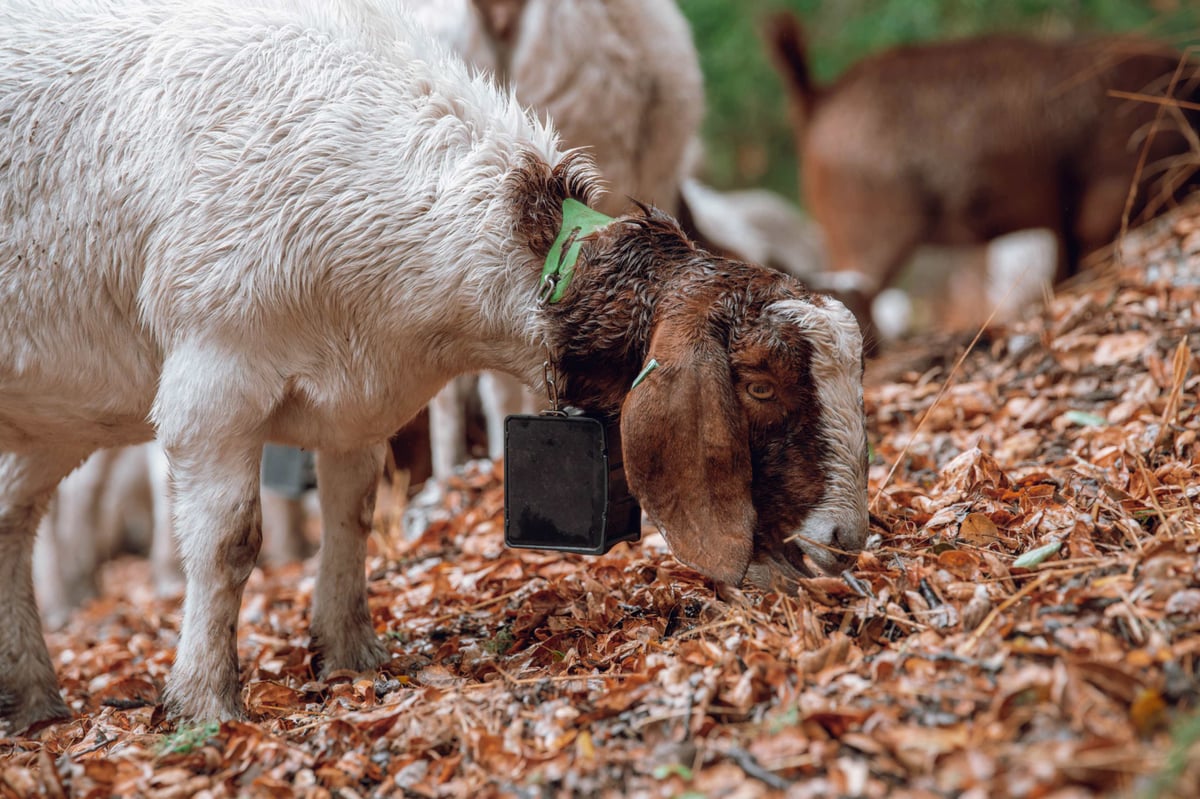
Turning environmental challenges into opportunities in California
In the heart of California’s coastal hills, Santa Barbara County, Stephanie Mathis is redefining what’s possible on marginal land. Managing part of her family’s expansive 14,000-acre ranch, Stephanie has introduced a herd of goats to tackle wildfire risks, rehabilitate underutilized land, and combat invasive species. Her secret weapon? Nofence’s virtual fencing technology.
“For years, I dreamed of using goats to transform our land, but the challenges of fencing this terrain seemed insurmountable,” Stephanie explains. “With Nofence, we’ve made it happen.”
Stephanie’s ranch is no stranger to environmental challenges. Dense vegetation, steep ridgetops, and invasive plants like mustard and artichokes have made traditional land management difficult. But her goats, guided by virtual fencing, are turning these obstacles into opportunities.
“Our forests were at high risk of burning. Now my goats are clearing fire hazards and rehabilitating land we couldn’t use before,” she explains. By grazing dense undergrowth and removing fuel ladders beneath the ranch’s coastal oaks, the goats are helping to create safer, healthier forests.
The precision grazing offered by Nofence has also enabled Stephanie to reclaim land that was previously unusable for livestock, improving both soil health and biodiversity.

The goats graze through dense undergrowth, clearing fire hazards and rehabilitating marginal lands with precision.
“Our forests were at high risk of burning. Now my goats are clearing fire hazards and rehabilitating land we couldn’t use before.” — Stephanie Mathis
A sustainable grazing system for the future
While her husband oversees their cattle operation, Stephanie is focused on using Nofence to manage her goat herd, and she’s already thinking ahead about expanding the technology to their cattle operation.
“I’d love to integrate Nofence for our cattle. It would allow us to create smaller paddocks and improve grazing efficiency across the ranch,” Stephanie says. “The idea of managing both goats and cattle with virtual fencing is exciting. It opens up new ways to protect the land while improving productivity.”
Stephanie envisions using Nofence to bring goats and cattle together in a coordinated system. “Goats are perfect for clearing brush and opening up land, and cattle can come in afterward to graze the grass. Together, they’re a powerful team for land restoration,” she explains. “With goats and cattle, we could combine their strengths, using goats to clear tough terrain and cattle to improve pasture health. Virtual fencing makes it possible.”

“Goats are perfect for clearing brush and opening up land, and cattle can come in afterward to graze the grass. Together, they’re a powerful team for land restoration.” — Stephanie Mathis

Simplifying grazing with technology
Stephanie uses the Nofence app daily to monitor her herd’s location and adjust grazing areas as needed.
“I’m not very tech-savvy, but the Nofence app is so intuitive. It makes managing my goats simple, even on steep hillsides and dense brush,” she shares. “With just a few taps on my phone, I can set up pastures and monitor my goats anywhere.”
The technology has also enabled her family to get involved. Her teenage sons and her husband help with goat care and fully support her project.

Stephanie manages her herd with ease, setting grazing boundaries and monitoring their location—all through the intuitive Nofence app.
Planning for growth and community impact
Stephanie is looking to extend her goat herd and further develop sustainable grazing practices, both for environmental restoration and to have a broader community impact. She hopes to inspire local schools through educational programs, and she is also planning to turn to agritourism in the future.
“I want to grow my herd and show how sustainable grazing can protect our land and communities,” Stephanie shares. “Agritourism is my next step, showing visitors how goats and virtual fencing can work together to restore the land.” She is also exploring partnerships with high-end restaurants to sell sustainably raised goat meat.
“This is the future of farming. Nofence is helping us innovate and adapt in ways I never thought possible,” Stephanie concludes.
Maximizing efficiency and profit with innovative grazing
Maximizing efficiency and profit with innovative grazing
With virtual fencing, Tyson Coles has found a way to enhance his herd management, improve soil health, and significantly increase operational efficiency while boosting his bottom line.
Revitalizing marginal land for sustainable farming
Revitalizing marginal land for sustainable farming
Will Oberton and Erin Gervais are leading the way in sustainable farming. With a focus on regenerative agriculture they show that even the toughest land can thrive when innovation meets determination.

